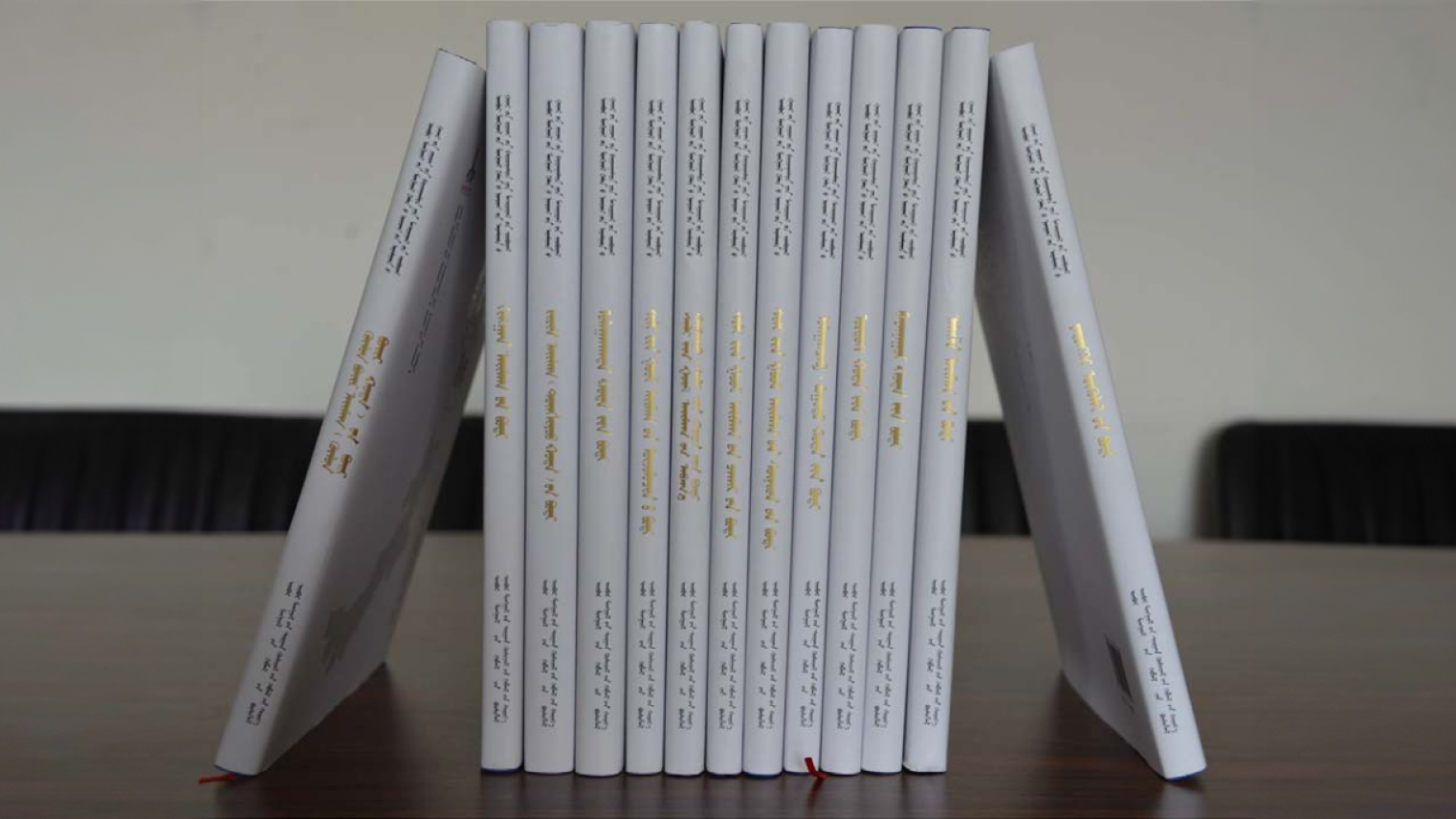Book Introduction by Visiting Fellow Qimuge (Inner Mongolia University, China)

<ᠦᠪᠦᠷ ᠮᠣᠩᠭᠤᠯ ᠤᠨ ᠮᠣᠩᠭᠣᠯ ᠬᠡᠯᠡᠨ ᠤ ᠨᠤᠲᠤᠭ ᠤᠨ ᠠᠶᠠᠯᠭᠤᠨ ᠤ ᠭᠠᠵᠠᠷ ᠤᠨ ᠵᠢᠷᠣᠭ ᠤᠨ ᠪᠠᠢᠴᠠᠭᠠᠯᠲᠠ ᠶᠢᠨ ᠮᠠᠲ᠋ᠧᠷᠢᠶᠠᠯ ᠤᠨ ᠴᠤᠪᠤᠷᠠᠯ>
《内蒙古蒙古语方言地图资料集》'Inner Mongolia Mongolian Dialect Map Data Collection' (13 volumes, edited by Senge and G´Zhaorigetu, Hohhot: Inner Mongolia Education Publishing House, Inner Mongolia Publishing Group, 2018. (A total of 3.52 million words).
The survey of a Mongolian dialect map in Inner Mongolia began in the early 1990s and has spanned over four generations of scholars and graduate students, culminating in its final completion in 2018. This extensive research project resulted in a comprehensive collection of thirteen volumes, including a general introductory volume and twelve dedicated volumes covering dialects in Alsha, Bayannur, Ordos, Ulaanchab and Bugutu, Sunit, Chahar, Abaga and Shilinhot, Ujumqin, Ulaanhad, Jirim, Ulaanhot and Hulun Buir.
This survey used a standardized investigation framework, conducting in-depth studies of dialects across various banners, leagues and cities in Inner Mongolia, China, over a period of more than twenty years. The research methodology included a 250-word vocabulary list,which is selected from the outline of the Mongolian dialect survey, reflecting the phonetic characteristics of each dialect, one hundred grammar questionnaires, and a detailed examination of pronoun case changes. Investigations were carried out at district townships, and town levels, encompassing a total of 539 research locations where Mongolian is actively spoken. Through its high-density and multi-point approach, this project not only documents the synchronic characteristics of Mongolian dialects in Inner Mongolia but also offers valuable insights into their evolution and development patterns from a diachronic perspective. This collection provides rich linguistic data that significantly enhances the study of Mongolian dialects in China and fills the gap in research on the geography of Mongolian dialects.